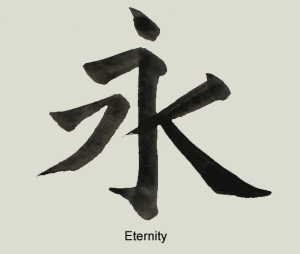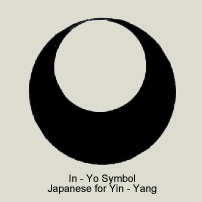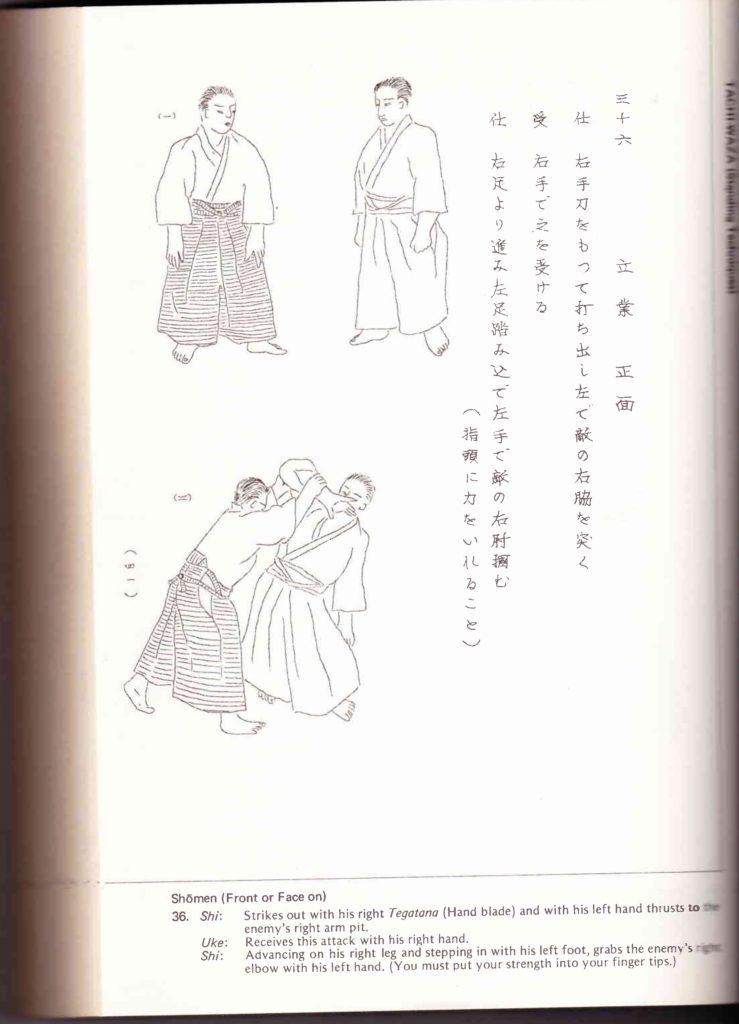There are only two kinds of people in the world: those who believe in dualism, and those who don’t. Dualism is everywhere, and if you doubt it for a minute, play word association with the person sitting across from you right now. Just say to them, “Tell me the first word that comes into your mind when I say each of the following words.”
Try these for starters:
hot :_____
black :_____
left :_____
If they’re bilaterally symmetrical, they are likely to respond with:
hot : cold,
black : white
left : right
In the case you happen upon one of those rare holistic individuals who answers something like: tamale, panther, and wing, read on nonetheless, you know what I mean.
Aikido is a gentle martial art training conflict resolution through movement, self defense without vengeance, the exhilaration of aerobic dance, dynamic meditation and a path to harmony with all creation.
Our culture is rich with other examples: right vs. wrong, mind vs. body, war vs. peace, yin vs. yang. Somewhere deep in our genetic memory lurks the instruction to pair up the forces of nature into opposing couplets and we obey. Perhaps it’s our biological design which drives the binary need to have everything in twos. Our brain seems very neatly divided, not to mention our hands. Surely, “left” and “right” had to be among the first words uttered by our ancestors, if they weren’t “girl” and “boy”.
Concurrent with this dualistic commandment of separation and opposition, throughout our society ripples an awareness of the need for moderation and balance, connection and oneness. From religion to mythology, sports to movies, we are exhorted to be “one with the ball”, “in tune”, “in the groove”, to “love one another”, “be in the flow”, “feel the beat”, “use the force”.
Well, which is it? Is the world divided up into “them” and “us” or are we one big happy family? Is everything either good or evil or do we have to accept that everything just is? Or worse, is life a grayscale continuum of “isness” with no markers or reference points to provide direction for moral and ethical decisions?
“Is you is or is you ain’t” —Louis Jordan, 1946
Which way to the truth? Is there anything practical we can actually do to improve our ability to distinguish the correct choices for ourselves?
Consider the explosion of the health, wellness, and consciousness movement of the past two decades or so. Millions of people are called from within and without to begin a journey of discovery through aerobics, yoga, massage, jogging, martial arts, meditation, and religion among many others. One common experience reported by these inner travelers is their encounter with unexpected benefits along the way, little epiphanies or enlightenments that reveal themselves as the dots connect.
This particular tale is about Aikido, a martial art from Japan, and the epiphanies and miracles revealed along its path. At its most graphic it trains a devastatingly effective way to fight and defend yourself; at its most poetic it is moving Zen, dynamic meditation, aerobic love.
If it turns out that we do have a holistic universe, and everything is connected, then this is a story about all paths to enlightenment. If not, it becomes just a story about Aikido and the epiphanies revealed by its study to just one person. That’s for you to decide.
If Aikido were a novel, ethical self defense would be its plot, its theme, the message between the lines, would be that we are all one with the universe.
Make me one with everything? Let’s try to bring that back to earth. For example, the plot of the novel Moby Dick is whale hunting in the days of sailing ships; its theme is the futility of man’s desire to obsessively control nature. The richly described world of a whaler and the stories of the people involved are the page-turning engine of the book (the plot), while one of the unavoidable conclusions (the theme), never stated outright, is that there’s got to be a better way to exercise our dominion over God’s creatures than the way Captain Ahab went about it.
One of Aikido’s unavoidable conclusions, never stated outright, is that we people, all of us, are much more alike than we are different. This is one of Aikido’s inevitable epiphanies.
The practice regimen of Aikido is simple. People of all shapes and sizes don white cotton uniforms and pair up to repeat a series of training exercises demonstrated by an instructor. The exercises, termed “techniques,” are loosely based upon attack and defense movements. These techniques are designed to correspond to defenses from every quarter of attack one might encounter in a fracas: a punch from the side, a grab from the right, a grab from the rear, a push, a pull, a sword cut to the head, et cetera.
There are only two kinds of people, those who see the point, and those who only see the pointer.
The defenses render the attacker harmless. This is accomplished without pain, without anger, and without vengeance. The aggressor is seen as an hysterical child who must be carefully restrained and shown the disruption in harmony caused by such aggression. An Aikidoist trains to harmonize with assertive forces, to absorb and redirect rather than resist and confront. Ethical self-defense is difficult to imagine and must be practiced, but it yields a freedom to respond without fear of behaving inappropriately. Part of the conflict resolution lesson of Aikido may be held within the apparent contradiction of learning cooperation in the context of a fighting art. The distinction may seem subtle, between making someone fall and making them want to fall, but the effect is liberating.
Equally liberating is the ability to learn defensive skills without becoming a defensive person, to train in the skills of warfare while becoming more peaceful.
Through repetition to subconsciousness, over and over one partner grabs or strikes toward the other provoking a defense. No matter how clumsy a beginner might be, improvement happens because perseverence works.
Easy to look at …
hard to see.
The roles switch and the practice continues. Since the parts are somewhat pre-defined, the comparison to dancing becomes obvious. Dancing? If this seems to be leaning too quickly toward the soft, yin side of interpersonal relationships, remember that Mohammed Ali was a great dancer, and it was often said that Fred Astaire would have been a great boxer.
The repetition continues for about ten minutes until another technique is demonstrated and the cycle renews: attack and defense, attack and defense. The format established, movement quickly assumes it’s own consciousness.
While learning to drive a car, the mantra “clutch, shift, accelerate” soon fades to the level of habitual behavior and frees the driver to enjoy the scenery or engage in conversation. Likewise in Aikido, directions like, “slide backward, swing up, step in” soon become suborned to an appreciation for the interaction of bodies and psyches. The techniques can be seen as musical scales, laboriously learned by rote at first, next assembled into simple ditties like the Twinkle, Twinkle Little Star of Suzuki violin training, and later nearly abandoned, defined only by suggestion in interpretive Jazz. The quick flowing movements are beautiful to look at, but the underlying power and life-energy dialogue are subtle and hard to see.
Human nature is revealed. Within this crucible of interplay all the action takes place. This is the birthplace of the Aikido epiphany. As we connect the dots of countless individual interactions, broader visions of what we are doing begin to appear. Vague and ill-defined at first, these insights eventually coalesce into a clarity that sometimes snaps into focus like a bolt and other times drifts hazily into our awareness.
Practical benefits accrue from this awareness. People report that rude traffic behavior no longer upsets them. Traffic just happens, like rain, and there’s no profit in getting upset with rain. One student credits Aikido practice for his new ability to enjoy camping since his previous inhibitions against performing bodily functions outdoors vanished quite suddenly.
All this evidence of personal growth is anecdotal but too consistent to ignore. Experiences seem to occur regardless of the personal reason for beginning the training: self-defense, physical fitness or assertiveness. Again, like the rain, we all become wet regardless of our motive for being out in a storm.
The human powers revealed by Aikido training are already present. The power developed by Aikido is already inside you, like a sculptor who liberates the hidden form from within a block of stone, the Aikido workout strips away the cultural overlays and reveals the power within. You can do more than you think. What might seem like a superhuman feat is just normal human skill unfettered by the predetermined failure inherent in most self-expectation. You have a preconceived notion of your abilities taught to you and limited by your experiences and your culture.
Epiphany – If you are normal, you sell yourself short. Just take a couple of barefoot walks through fiery red hot coals on a California beach like thousands of other seekers if you don’t believe this. Sometimes a journey away can teach an appreciation of home.
The answer sought is secret lost.
The physical exertion of the practice is likely to result in the development of more muscle mass and physical strength as well. But this is a side benefit, another one of the “things learned along the way”.
All this happens in the Aikido dojo, the place where one follows the path. The western definition of dojo might be found in the dictionary somewhere between “church” and “gymnasium”. It can happen elsewhere as well.
The style and nature of places which give birth to epiphanies, or enlightenments, are as varied as people, but a few elements seem to be held in common.
Time is eternal in these places. Being in the “now” is a requirement. Tomorrow’s schedule and your checkbook balance must fade to oblivion. However, just being in the present isn’t enough. The peripheral vision must have occasional glimpses into the past and future simultaneously.
Maybe that’s the difference between forever and eternal. Forever continues in a straight line for a very long time, an infinitely long time. Eternity always was and always will be. The past, present and future exist together, without movement. Saving time, wasting time, and making up for lost time don’t have any meaning in eternity. The critical feature of eternity is that it is always there. Eternity is not some “here today… gone today” kind of experience. No, eternity is there and waiting for you, elusive, but available. The changes needed to experience it are up to you.
A dojo is not a classroom. A place of epiphanies is a right brain place. Thinking gets in the way. Cognitive paralysis can lead to the woeful state wherein you are too smart to believe in placebo, but not smart enough to cure yourself. Suspension of disbelief is needed. One Japanese school of swordsmanship holds that there can be no thinking in a duel. At the instant of the formulation of a single thought about the fight, at that instant you are defeated.
A beginning student of Aikido typically moves through a period of confusion between their left and right sides, feet, hands. While disorienting and a source of embarrassment, it nonetheless signals the passing from the left, cognitive side of the brain to the right, intuitive side. This is a good sign. True learning is cellular–you may learn to congratulate yourself for every moment spent being truly thoughtless.
Epiphany – All statements are opinions. No matter how strongly phrased, or assertively decreed, the most anyone can share with you is their view from where and when they are standing.
A teacher or fellow student may instruct to move left before right and to hold the image of a tornado in your mind, another, the very next day, might instruct to move differently and envision the image of a rock. The seduction of dualistic, black and white thinking is that they can’t both be right.
In legend, a group of blindfolded persons was introduced to an elephant. The first touched the trunk and declared, “An elephant is like a thick snake.” The second, at a leg, retorted, “No! An elephant is like a tree trunk.” The third, tail in hand, interrupted, “You are both mistaken, an elephant is like a rope.” And so on… maybe they can all be right.
Suggestions can be difficult, difficult to give and difficult to receive. Metaphors and similes can only hint at the meaning of the indescribable. Be supple as a willow. Be solid as a stone. Ki is like fire. Ki is like water. Aikido can’t be taught… only learned. Nothing you hear is completely true, including this statement.

Another of the Aikido founder’s goals of training was polishing the heart (Jap.- kokoro) to the finish of a mirror, so that any aggressor would see themselves in their victim and reconsider any thoughts of harm. Conversely, it turns out that each and every partner you have in Aikido will hold up a mirror for you to observe yourself in their reactions. It’s eerie to a have a partner commiserate accurately on the bad day you’ve had when your only communication was to take hold of their wrist. You will learn that you can make someone smile or frown, show fear, pleasure, or anger with the subtlest of non-verbal physical interactions.
Epiphany – You can learn something from everyone. The Japanese term used for this in Aikido is shoshin, beginner’s mind. Shoshin could be an archetype for learning which is unfettered by ego. One of the reasons that children are so proficient at acquiring language is that they aren’t self-conscious about trying. Beyond the linguistic and developmental explanations, children are good at learning because they aren’t afraid of looking foolish. You can be better at learning too, with shoshin.
…we train in self defense so that we have no self to defend.
Try a suggestion on, like a gift pair of gloves offered by a friend. If the gloves fit, accept them thankfully. If they don’t suit you, don’t use them, and put them aside with a thank you for the offering. There’s no need to make your friend wrong or bad because his attempt to help didn’t suit you. Most suggestions aren’t attacks and need no defense. An Aikido saying is that we train in self defense so that we have no self to defend.
Epiphany – Most opposites are falsely opposed. A plastic bag, no matter how suffocating, is not the opposite of breath.
One of the many sub-plots in Aikido is the balance of the dialectical opposites which have been models of conflict for many centuries in many cultures. Here’s a small sample:
mind versus body
other versus self
Yin versus Yang (in Japanese, In versus Yo)
female versus male
Apparent contradictions can dissolve wordlessly if they are explored without preconceived notions of right and wrong. Perhaps we strive so hard to push the extremes of our experiences to the edge because we have a deep, quiet longing to see the center which is suggested between any two complete opposites.
The material focus of Aikido training is hand to hand combat, but ultimately, Aikido is love. Aikido is love? How do we know that? We know it because Morehei Ueshiba, the late founder of Aikido, said so, and part of being a grown-up is having the ability to suspend judgment, to learn from something even if you don’t understand all the words.
Remember, there are only two kinds of people in the world: those who think life is a journey, and those who think it’s a destination.
Have a nice trip!




